Imagine strolling through the ancient streets of Rome, the air filled with the scent of history and the sounds of bustling life. As you weave through the crowds, you might stumble upon something unexpected: a touch of Japan.
Though geographically distant, Italy and Japan share a surprising connection, with several Japanese cultural institutions and places enriching the vibrant tapestry of Rome. Let’s embark on a journey to discover these hidden gems.
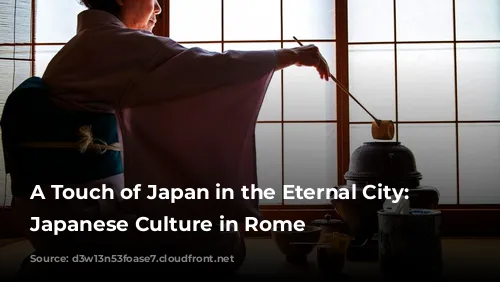
A Gateway to Japanese Culture: The Japanese Cultural Institute
Tucked away in the charming Valle Giulia area, near the National Gallery of Modern Art, sits the Japanese Cultural Institute. This beautiful institution serves as a bridge between Italy and Japan, promoting the rich and diverse aspects of Japanese culture.
The institute’s doors are open to all, with free events celebrating Japanese arts, music, and entertainment. Its serene garden, designed by a Japanese architect, is a true oasis of tranquility. The pond, waterfall, rocks, and delicate stone lantern transport you to a tranquil Japanese landscape. The garden is particularly enchanting during the blossoming of the sakura (Japanese cherry trees), painting the scene with a delicate pink hue.
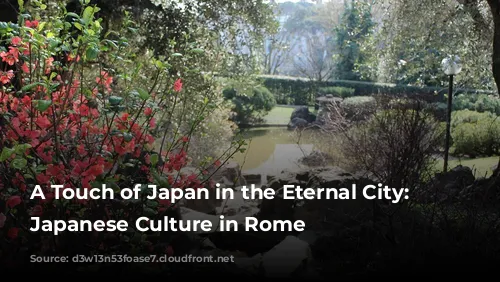
The Art of the Tea Ceremony and Beyond: Urasenke
For a deeper dive into Japanese tradition, venture to Urasenke, a center dedicated to the art of the tea ceremony. Established in Rome in 1969, Urasenke bears the name of one of the most prestigious tea ceremony schools in Japan.
Here, you can participate in tea preparation courses, attend lectures and screenings, and even experience Zen meditation. Urasenke also offers classes in ikebana, the ancient art of flower arrangement, allowing you to appreciate the beauty of nature through a Japanese lens.
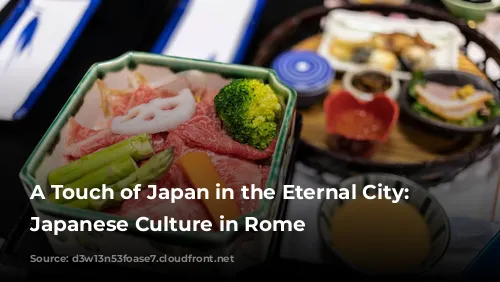
Sakura in Bloom: A Symbol of Friendship
The enchanting scent of sakura blossoms fills the air around the EUR lake, where 174 of these beautiful trees stand as a symbol of the enduring friendship between Japan and Italy.
In 1959, the city of Tokyo gifted 150 sakura trees to Rome, a gesture of peace and goodwill. The “Japan Walk” meandering through the gardens becomes a haven for families seeking a picnic under the shade of the blossoming trees. For the Japanese, the delicate beauty of the sakura symbolizes the fleeting nature of life and the promise of renewal.
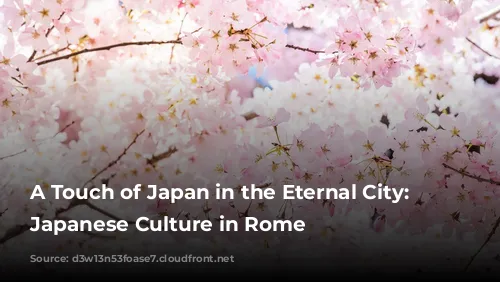
A Culinary Journey to Japan: The Best Restaurants in Rome
As your journey through Japanese culture in Rome continues, indulge your taste buds with a delightful culinary adventure.
Waraku Japanese Bistro, a beloved spot in Rome, offers authentic Japanese cuisine with a focus on classic dishes like ramen, gyoza, okonomiyaki, and takoyaki. The menu caters to all tastes, with vegetarian options and tempting desserts, all prepared with the freshest ingredients.
For a more refined dining experience, head to Hamasei, an elegant restaurant in the heart of Rome, just steps away from the Spanish Steps. Renowned for its authenticity, Hamasei offers a taste of Japan crafted by skilled Japanese chefs.
The Kaiseki menu, a multi-course meal deeply rooted in the tea ceremony and Zen philosophy, is a must-try. Each carefully prepared dish, from the soup to the side dishes and rice, is a symphony of flavors, aromas, and colors, reflecting the essence of Japanese cuisine.
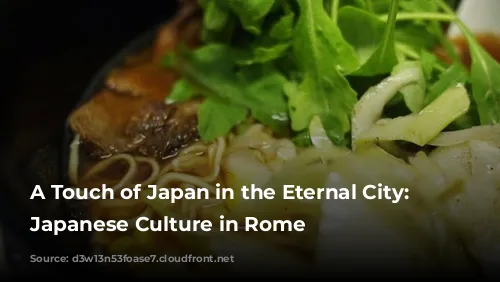
A Glimpse of Japan in Rome: A Journey to Explore
As you wander through the streets of Rome, keep an eye out for these hidden treasures of Japanese culture. The Japanese Cultural Institute, Urasenke, the sakura-lined gardens, and authentic Japanese restaurants offer a glimpse into the vibrant tapestry of this fascinating country, bringing a touch of the land of the Rising Sun to the Eternal City.
So, pack your curiosity, and prepare to be surprised by the unexpected connections between these two distinct cultures. Perhaps your journey will inspire you to plan a trip to Japan, where you can delve even deeper into the rich history, traditions, and beauty of this unique nation.

